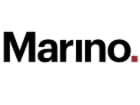LOWELL, Mass., Oct. 22, 2020 (GLOBE NEWSWIRE) -- Enterprise Bancorp, Inc. (NASDAQ: EBTC), parent of Enterprise Bank, announced net income for the three months ended September 30, 2020 of $10.3 million, or $0.87 per diluted share, compared to $9.0 million, or $0.76 per diluted share, for the three months ended September 30, 2019. Net income for the nine months ended September 30, 2020 amounted to $21.6 million, or $1.81 per diluted share, compared to $25.5 million, or $2.15 per diluted share, for the nine months ended September 30, 2019.
As previously announced on October 20, 2020, the Company declared a quarterly dividend of $0.175 per share to be paid on December 1, 2020 to shareholders of record as of November 10, 2020.
Chief Executive Officer Jack Clancy commented, “Our third quarter results positively reflect our strong participation in the Paycheck Protection Program (“PPP”). In the second quarter we originated over 2,700 PPP loans for $508 million with a median loan size of $67 thousand. These loans contributed strongly to the 14% increase in net interest income in the third quarter compared to the prior year period. The PPP results were truly a bank-wide effort and we are gratified that we were able to support our customers during this time of financial uncertainty. We continue to work diligently to ensure that the PPP loan forgiveness process is an efficient and positive experience for our customers.”
Mr. Clancy added, “Our strong growth figures this year have been significantly impacted by both the outstanding PPP loans and the pandemic in general. Loan growth has been positively and substantially impacted by outstanding PPP loans. Deposit growth has also been positively and substantially impacted by the PPP, as the PPP loan monies that were distributed into deposit accounts. Additionally, deposit growth has been positively impacted by stimulus checks and by customers proactively building liquidity in response to the economic uncertainty caused by the pandemic. We anticipate that as the majority of PPP loans are forgiven or paid off, which we believe will occur principally over the next 12 months, and as customers spend down their PPP funds, we will experience a reduction in both loans and deposits.”
Mr. Clancy further commented, “In the fourth quarter we will be adopting the Financial Accounting Standards Board’s Accounting Standards Update 2016-13, Measurement of Credit Losses on Financial Instruments, including the current expected credit losses methodology for estimating the allowance for credit losses (“CECL”). If adopted as of September 30, 2020, we estimate CECL would have increased our total allowance for loan losses, including the reserve for unfunded commitments, by $8.0 million to $11.0 million and would have increased our total allowance for loan losses to total loans ratio from 1.65% to a range of 1.95% to 2.06%, excluding PPP loans. CECL will be adopted with an effective retrospective implementation date of January 1, 2020. Included in the estimated total increase in the allowance for loan losses is approximately pre-tax $3.0 million that will be recorded through equity, net of taxes, as the CECL day one implementation adjustment and pre-tax $5.0 million to $8.0 million that will be recorded through earnings and applied retrospectively to the applicable March 31, June 30, and September 30 quarterly results.”
Founder and Chairman of the Board George Duncan commented, “While the near term economic outlook remains uncertain, we remain committed to our long-term focus of serving our customers, building relationships, investing in our future, cultivating our digital evolution, expanding geographically, and further developing our services and products. Regarding branch expansion, our Lexington branch which opened in March is exceeding our expectations despite the unusual operating environment and we are looking forward to opening our North Andover site early in 2021.”
On September 10, 2020, Enterprise Bank was recognized at the Boston Business Journal's Corporate Citizenship Summit as ranking 2nd for the highest average hours of community service and 48th among the largest corporate donors in Massachusetts. Mr. Duncan said, "I am personally very proud of this team accomplishment. Our commitment to the communities we serve is entrenched in our culture and reflects our deep sense of purpose as a genuine community bank."
Paycheck Protection Program
The PPP was created by the Coronavirus Aid, Relief, and Economic Security Act (the “CARES Act”) and instituted by the Small Business Administration (“SBA”). The PPP allowed entities to apply for a 1.00% interest rate loan with payments generally deferred until the date the lender receives the applicable forgiveness amount from the SBA. The PPP loans may be partially or fully forgiven by the SBA if the entity meets certain conditions. For most PPP loans, the maturity term for any principal portion left unforgiven is 2 years from the funding date. For PPP loans that the SBA approved on or after June 5, 2020, the loan must have a maturity of at least 5 years. All PPP loans are fully guaranteed by the SBA and are included in total loans outstanding. As of September 30, 2020, the Company had 2,758 PPP loans outstanding totaling $508.2 million.
In addition to generating interest income, the SBA pays lender’s fees for processing PPP loans. As of September 30, 2020, the Company has recorded $17.2 million in PPP related SBA fees and is accreting these fees into interest income over the life of the applicable loans. If a PPP loan is forgiven or paid off before maturity, the remaining unearned fee is recognized into income at that time. Year-to-date through September 30, 2020, the Company has recognized $3.7 million in PPP related SBA fees through accretion. The majority of the remaining $13.5 million in fees are expected to be recognized as the PPP loans are forgiven over the next several quarters.
Results of Operations
Throughout this press release we have noted certain ratios or other measures of the Company’s performance as having been adjusted to remove the impact of PPP loans, which we expect to be short-term in nature. The table on page 9 provides a reconciliation of the non-GAAP measures to the information presented under U.S. generally accepted accounting principles (“GAAP”).
The net income results for the three and nine months ended September 30, 2020 compared to the prior year periods were positively impacted by growth in net interest income, offset by increases in the provision for loan losses and operating expenses. The increases in net interest income resulted mainly from loan growth, PPP income and lower funding costs. The provision for loan losses increased over the prior year periods as the Company added to general reserves to address the impact of COVID-19 on the Company's loan portfolio and from an increase in impaired loan reserves. Operating expenses increased primarily from the Company’s strategic growth initiatives.
Net interest income for the three months ended September 30, 2020 amounted to $33.5 million, an increase of $4.1 million, or 14%, compared to the three months ended September 30, 2019. Net interest income for the nine months ended September 30, 2020 amounted to $96.0 million, an increase of $9.7 million, or 11%, compared to the nine months ended September 30, 2019. The increase in net interest income was due largely to interest-earning asset growth, primarily in loans, partially offset by a decline in tax equivalent net interest margin (“net interest margin” or “margin”). Quarter-to-date net interest income included $1.3 million in PPP interest income plus $2.1 million in PPP related SBA fee accretion. Year-to-date net interest income included $2.2 million in PPP interest income plus $3.7 million in PPP related SBA fee accretion.
Average loan balances increased $724.0 million, or 30%, for the three months ended, and $537.3 million, or 22%, for the nine months ended September 30, 2020, compared to the same respective 2019 period averages. Excluding PPP loans, average loan balances increased $230.2 million, or 9%, for the three months ended September 30, 2020, and $249.3 million, or 10%, for the nine months ended September 30, 2020, compared to the same respective 2019 period averages.
Net interest margin was 3.46%, 3.59%, and 3.93% for the three months ended September 30, 2020, June 30, 2020, and September 30, 2019, respectively. Net interest margin was 3.63% and 3.96% for the nine months ended September 30, 2020 and 2019, respectively. Excluding PPP loans, net interest margin for the three and nine months ended September 30, 2020 was 3.56% and 3.70%, respectively. The lower margin results in 2020 are reflective primarily of the significant decline in interest rates since the comparable periods resulting in interest-earning asset yields declining faster than the cost of funding. Net interest margin for the September 2020 quarter was also impacted by a significantly higher quarter-to-date average balance in lower-yielding short-term and overnight investments of $259.8 million compared to $106.3 million in the prior year period. Interest-earning asset yields have been impacted by a 175 basis-point decrease in the Federal Funds rate since September 30, 2019, with 150 basis-points of that total decline occurring in March 2020. Term interest rates have also fallen significantly over the respective periods and collectively these interest rate decreases have reduced yields on loan repricing, short-term and overnight investments and interest-earning asset growth. The Company funds these interest-earning assets principally through non-term customer deposits, which were less impacted by the interest rate declines.
For the three months ended September 30, 2020, the provision for loan losses amounted to $1.6 million, compared to $1.0 million for the three months ended September 30, 2019. The provision for the quarter ended September 30, 2020 consisted of $1.0 million in general reserve factor increases primarily related to economic weakness caused by the COVID-19 pandemic and its impact on credit quality in the loan portfolio, $845 thousand related to classified and impaired loans and a net reduction of $278 thousand related to changes in loan mix, among other factors.
For the nine months ended September 30, 2020, the provision for loan losses amounted to $10.4 million, compared to $1.6 million for the nine months ended September 30, 2019. The provision for the nine months ended September 30, 2020 consisted of $6.3 million in general reserve factor increases primarily related to economic weakness caused by the COVID-19 pandemic and its impact on credit quality in the loan portfolio, $3.1 million related to classified and impaired loans and $1.0 million related to loan growth and changes in loan mix, among other factors.
Non-interest income for the three months ended September 30, 2020 amounted to $4.3 million, an increase of $175 thousand, or 4%, compared to the three months ended September 30, 2019. Quarter-to-date non-interest income increased in 2020 due primarily to increases to net gains on sales of securities and net gains on sales of loans, partially off-set by decreases in deposit and interchange fees. Non-interest income for the nine months ended September 30, 2020 amounted to $12.5 million, an increase of $507 thousand, or 4%, compared to the nine months ended September 30, 2019. Year-to-date non-interest income increased in 2020 due primarily to increases in net gains on sales of loans and wealth management fees, partially offset by a decrease in deposit and interchange fees. Year-to-date other miscellaneous income decreased mainly due to decreases in equity investment fair values, partially offset by derivative fee income.
Non-interest expense for the three months ended September 30, 2020, amounted to $22.8 million, an increase of $1.7 million, or 8%, compared to the three months ended September 30, 2019. Non-interest expense for the nine months ended September 30, 2020, amounted to $69.8 million, an increase of $6.1 million, or 10%, compared to the nine months ended September 30, 2019. Increases in non-interest expense in 2020 related primarily to the Company's strategic growth initiatives, particularly salaries and employee benefits, and to a lesser extent technology and telecommunications expenses. Additionally, FDIC deposit insurance premiums increased from primarily higher insurance charges caused by a decline in our Tier 1 leverage ratio resulting from PPP loans outstanding and also from the 2019 expense being positively impacted by a $376 thousand credit from the FDIC Deposit Insurance Fund.
Credit Quality
At September 30, 2020, the Company determined its allowance for loan losses using the incurred loss methodology. The allowance for loan losses to total loan ratio was 1.39% at September 30, 2020, compared to 1.31% at December 31, 2019 and 1.37% at September 30, 2019. Excluding PPP loans, which are fully guaranteed by the SBA, the allowance for loan losses to total loan ratio was 1.65% at September 30, 2020.
In the first quarter of 2020, the Company chose to delay its implementation of CECL, in accordance with the provisions of the CARES Act. Under the CARES Act, the Company will delay implementation of CECL until the earlier of (i) the date on which the national emergency concerning the COVID-19 pandemic terminates, or (ii) December 31, 2020.
While the Company has not yet adopted CECL, we estimate that under CECL, as of September 30, 2020, the combined allowance for credit losses, and the reserve for unfunded commitments, would have been between $52.0 million and $55.0 million, or 1.95% to 2.06% of total loans, excluding PPP loans. As previously noted, the Company will adopt CECL in the fourth quarter.
Non-performing assets to total assets amounted to 0.53% at September 30, 2020, compared to 0.46% at December 31, 2019 and 0.39% at September 30, 2019. Excluding PPP loans, the non-performing assets to total assets ratio was 0.61% at September 30, 2020.
As a result of the economic uncertainty created by the pandemic, the long-term impact on the credit quality of our loan portfolio cannot be reasonably estimated at this time. We will continue to closely monitor the effect on credit quality across all industry sectors in our diversified loan portfolio as the results unfold in future quarters.
Management has been proactive with customers since the onset of the pandemic and granted short-term payment deferrals to those requesting financial assistance. As of June 30, 2020, short-term payment deferrals due to the COVID-19 pandemic were granted on 1,130 loans amounting to $594.8 million, or 22% of the portfolio, excluding PPP loans. As of September 30, 2020, short-term payment deferrals due to the COVID-19 pandemic remained active on 178 loans, amounting to $104.1 million, or 4% of the portfolio, excluding PPP loans.
Key Financial Highlights
- Total assets amounted to $4.06 billion at September 30, 2020, compared to $3.24 billion at December 31, 2019, an increase of $825.5 million, or 26%. Since June 30, 2020, total assets have increased $23.3 million, or 1%. Excluding PPP loans, total assets have increased $330.8 million, or 10%, since December 31, 2019 and $18.8 million, or 1%, since June 30, 2020.
- Total loans amounted to $3.15 billion at September 30, 2020, compared to $2.57 billion at December 31, 2019, an increase of $585.4 million, or 23%. Since June 30, 2020, total loans have decreased $25.3 million, or 1%. Excluding PPP loans, total loans have increased $90.7 million, or 4%, since December 31, 2019 and decreased $29.9 million or 1% since June 30, 2020.
- Customer deposits were $3.54 billion at September 30, 2020, compared to $2.79 billion at December 31, 2019, an increase of $748.3 million, or 27%. Since June 30, 2020, customer deposits have decreased $38.0 million, or 1%. Management believes the deposit growth since December 31, 2019 was due in large part to customers depositing funds received from PPP loan advances and stimulus checks, and generally maintaining higher liquidity in response to the pandemic.
- Investment assets under management amounted to $925.4 million at September 30, 2020, compared to $916.6 million at December 31, 2019, an increase of $8.8 million, or 1%. Since June 30, 2020, investment assets under management have increased $45.2 million, or 5%, due primarily to asset growth from market appreciation.
- Total capital to risk weighted assets ratio for the Company, on a consolidated basis, was 14.31% at September 30, 2020 compared to 11.80% and 11.88% at June 30, 2020 and December 31, 2019, respectively. The increase resulted primarily from the Company’s July 7, 2020 issuance of $60.0 million in fixed-to-floating rate subordinated notes (the “notes”) due 2030 and redeemable on or after July 15, 2025. The notes are classified as Tier 2 regulatory capital for the Company.
- Total and Tier 1 capital to risk weighted asset ratios for Enterprise Bank were to 14.17% and 12.92%, respectively, at September 30, 2020 compared to 11.79% and 10.53%, respectively, at June 30, 2020 and to 11.87% and 10.65%, respectively, at December 31, 2019. The increase in the Bank's capital ratios was due primarily to the Company investing $53.0 million into the Bank from the Company’s issuance of the notes.
Enterprise Bancorp, Inc. is a Massachusetts corporation that conducts substantially all its operations through Enterprise Bank and Trust Company, commonly referred to as Enterprise Bank, and has reported 124 consecutive profitable quarters. Enterprise Bank is principally engaged in the business of attracting deposits from the general public and investing in commercial loans and investment securities. Through Enterprise Bank and its subsidiaries, the Company offers a range of commercial, residential and consumer loan products, deposit products and cash management services, electronic and digital banking options, and commercial insurance services, as well as wealth management, wealth services and trust services. The Company's headquarters and Enterprise Bank's main office are located at 222 Merrimack Street in Lowell, Massachusetts. The Company's primary market area is the Greater Merrimack Valley, Nashoba Valley, and North Central regions of Massachusetts and Southern New Hampshire (Southern Hillsborough and Rockingham counties). Enterprise Bank has 25 full-service branches located in the Massachusetts communities of Lowell (2), Acton, Andover, Billerica (2), Chelmsford (2), Dracut, Fitchburg, Lawrence, Leominster, Lexington, Methuen, Tewksbury (2), Tyngsborough and Westford and in the New Hampshire communities of Derry, Hudson, Nashua (2), Pelham, Salem and Windham. The Company is also in the process of establishing a branch office in North Andover, MA and anticipates that this location will open in early 2021.














